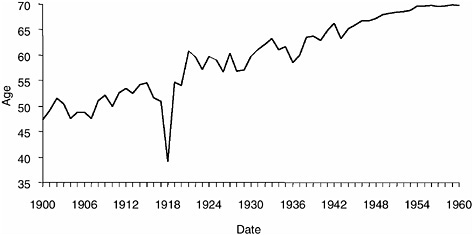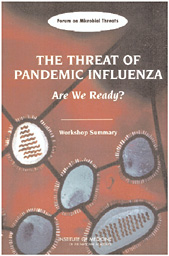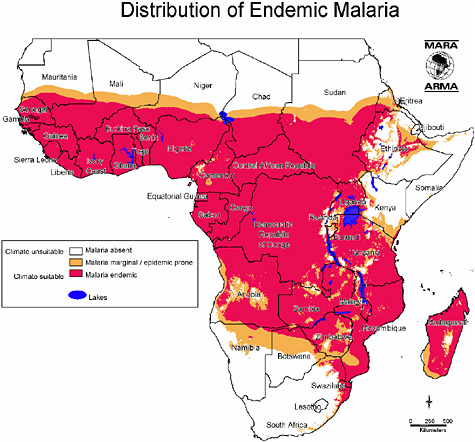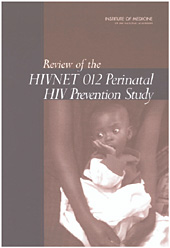Global Health
A 1997 Institute of Medicine (IOM) report, America’s Vital Interest in Global Health: Protecting Our People, Enhancing Our Economy, and Advancing Our International Interests, described the globalization of health and the inter-dependency of the health of peoples worldwide. It noted that the health of all people is profoundly affected by economic, social, behavioral, political, scientific, and technological factors, many of which are changing at an unprecedented pace domestically and globally. Subsequent events have affirmed the report’s foresight and underscored the importance of American attention to global as well as local health. The IOM is active on multiple fronts to address global health challenges and to strengthen the capacity of scientific organizations in developing countries so that they can act locally in the same manner as the IOM in bringing good science to inform public- and private-sector actions.
ACTIVATING SCIENCE GLOBALLY TO IMPROVE HEALTH
A major investment in this regard is the IOM’s leadership in forming and helping to operationalize the InterAcademy Medical Panel (IAMP), an organization of medical academies in the developed and developing world. In its formative phase, the IAMP has been cochaired by the IOM’s Foreign Secretary and his counterpart at the French Medical Academy. Today, more than 40 academies are members of the IAMP, and collectively they have undertaken a project to provide scientific review of the new edition of Disease Control Priorities in Developing Countries (DCPP). When completed, the DCPP will provide a blueprint for investments in health improvement by country governments and international donor agencies. Over time, the activities of the IAMP will improve the visibility of country academies as a resource for science-based advice to their own governments.
The IOM is active on multiple fronts to address global health challenges and to strengthen the capacity of scientific organizations in developing countries so that they can act locally in the same manner as the IOM in bringing good science to inform public- and private-sector actions.
In a parallel but more intensely engaged effort, the IOM and the National Research Council have undertaken a project to develop the capacity of academies of science and medicine in Africa to provide advice to their governments in the same manner that the National Academies advise the U.S. government. Supported by a 10-year grant from the Bill & Melinda Gates Foundation, this
ambitious effort will work intensively with three African academies: in Uganda, South Africa, and Nigeria. In addition, four additional academies in Africa will be involved in annual symposia and other developmental efforts to enhance their role and visibility as science advisers to their countries and governments.
The need for global communication and cooperation could not be more urgent. Most infectious disease experts believe that a future influenza pandemic is inevitable—and may be on the near horizon. News coverage has highlighted this concern, especially with the recent appearance of the H5N1 “bird flu” in Asia, which also has resulted in some human cases.
Despite the clear precedent of the 1918 “Spanish flu” pandemic that killed an estimated 50 million to 100 million people, and of the more recent 1957 and 1968 pandemics that claimed millions more lives, the public appears relatively unaware of the gravity of the threat and the preparations that should be under way to mitigate loss of life and economic disruption when the virus breaks loose.
COMBATTING INFECTIOUS DISEASE
The IOM has addressed pandemic influenza in several of its activities. In June 2004, the Forum on Microbial Threats held a workshop to examine the

Life expectancy in the United States, 1900-1960 showing the impact of the 1918 influenza pandemic. SOURCE: The Threat of Pandemic Influenza: Are We Ready? A Workshop Summary, pp. 1-23.
nation’s level of preparedness. The workshop report, The Threat of Pandemic Influenza: Are We Ready? (2005), explores a broad range of medical, technical, social, economic, and political opportunities for enhancing pandemic preparedness and details the many obstacles that stand in the way of achieving this goal. Subsequently, the John R. La Montagne Memorial Symposium on Pandemic Influenza Research was held in April 2005 to discuss the current state of research on pandemic influenza and to identify research gaps. The symposium marked an important step toward a combined and coordinated research effort among Department of Health and Human Services (DHHS) agencies, other governmental agencies, international partners, and the private sector. The IOM also has been asked to assist the Secretary of DHHS in additional activities to support readiness planning for the expected epidemic.

Africa lives with a permanent epidemic of malaria that is especially lethal for its children. More African children die of malaria than any other disease, and Africans of all ages suffer hundreds of millions of episodes of malarial illness each year. Malaria is considered a major health threat in Asia, South America, and other regions of the world. Over the past several decades, chloroquine, a low-cost malaria drug, has saved millions of lives and cured billions of debilitating infections. But chloroquine is losing its effectiveness as parasites that transmit the disease to humans develop resistance to the drug. As a result, death rates from malaria now are increasing in sub-Saharan Africa, for the first time in decades.
Saving Lives, Buying Time: Economics of Malaria Drugs in an Age of Resistance (2004) provides a detailed plan for getting new classes of antimalarial agents to all people in need. International organizations and world leaders should collectively contribute $300 million to $500 million annually over five years to create a global subsidy that would make new malaria treatments—called artemisinin-based combination therapies, or ACTs—widely available and at the cost of the older drug. ACTs have proved highly effective in treating malaria, and parasites have not yet developed resistance to them, but their current high cost has limited affordability for individuals and governments. The report proposes that a centralized procurement agency would use subsidy funds to buy ACTs from drug manufactures at competitive prices and then resell them at substantially lower prices to public and private distribution organizations. This strategy would take advantage of the largely private drug-distribution network that

Distribution of endemic malaria in Africa. SOURCE: Saving Lives, Buying Time: Economics of Malarial Drugs in an Age of Resistance, p. 25.
already successfully delivers chloroquine even into remote rural areas where malaria is endemic but where the public sector has little presence.
Shortly after the report’s release, The Lancet, a leading medical journal, published an editorial calling the recommendations “strong and convincing” and highlighting the various advantages of an internationally subsidized system for distributing ACTs. “The IOM plan could offer a way to improve the lives of people living in the most malarious regions of the world,” the journal concludes. “It deserves serious consideration.” Indeed, leading organizations are getting involved. The World Bank, a major supporter of malaria control efforts, has recognized the value of the report’s proposed strategy. The organization commissioned its own internal economic analysis, which reaffirmed the basic premise of an internationally subsidized system for distributing ACTs, and is con-
sidering feasibility studies to determine whether and how to proceed with implementation.
The report proposes that a centralized procurement agency would use subsidy funds to buy ACTs from drug manufactures at competitive prices and then resell them at substantially lower prices to public and private distribution organizations.
Throughout the developing world, there has been an urgent need for practical and affordable methods for preventing human immunodeficiency virus (HIV) transmission from mother to child. The problem is especially pressing in sub-Saharan Africa, where 10 percent to 30 percent of pregnant women carry the virus. This need has prompted a number of studies to identify antiretroviral regimens that are inexpensive, simple, and easy to implement in resource-poor locations. HIVNET 012 was one such study. Conducted in Uganda beginning in 1997, the study found that a single dose of the drug nevirapine, given to the mother at the onset of labor and to the infant within 72 hours of birth, appeared to be highly effective and safe in preventing HIV transmission. The results encouraged the manufacturer to submit a supplemental new drug application to the U.S. Food and Drug Administration to allow nevirapine to be used for this purpose. However, some observers had concerns about the scientific validity of the trial’s conclusions. In response, the National Institutes of Health, which funded the study in Uganda, asked the IOM to independently analyze its design, execution, and conclusions. Review of the HIVNET 012 Perinatal HIV Prevention Study (2005) concludes that the trial was generally well conducted (despite some flaws in record keeping and procedural matters) and that its findings are sound and reliable. Policymakers and other scientists therefore can rely on the study’s data and conclusions.

In high-income countries, many people infected with HIV now enjoy significantly longer, good-quality lives as a result of receiving antiretroviral therapy (ART). However, most HIV-infected individuals live in low-income countries, where ART has been largely inaccessible.
In recognition of this gap, governments and international organizations have recently launched or are planning large-scale programs that will bring ART to millions of people in developing countries. Scaling Up Treatment for the Global AIDS Pandemic: Challenges and Opportunities (2004) reviews these initiatives and identifies a rational framework and key principles that will help ensure their success. One core message that the report delivers: it is critical to act now and act well
TABLE 1-1 Coverage of ART in Developing Contries, 2003 (adults by WHO region)
|
Region |
Number of People on ART |
Estimated Need |
Coverage |
|
Africa |
100,000 |
4,400,000 |
2% |
|
Americas |
210,000 |
250,000 |
84% |
|
Europe (Eastern Eropee, Centeral Asia) |
15,000 |
80,000 |
19% |
|
Eastern Mediterranean |
5,000 |
100,000 |
5% |
|
Southeast Asia |
60,000 |
900,000 |
7% |
|
Western Pacific |
10,000 |
170,000 |
6% |
|
All WHO Regions |
400,000 |
5,900.000 |
7% |
|
SOURCE: WHO, 2003 Coverage of ART in developing countries, 2003 (adults by WHO region). SOURCE: Scaling Up Treatment for the Global AIDS Pandemic: Challenges and Opportunities, p. 21. |
|||
with respect to the rollout of major new ART programs in resource-poor settings. Moreover, donors must be prepared to support effective programs over the long term, as HIV infection will persist for decades and the number of people needing treatment will increase. Programs should incorporate strategies that promote the highest levels of patient adherence to drug regimens, in order to minimize the chances of treatment failure or the development of drug-resistant strains of the virus, and they should take a “learning by doing” approach in which monitoring and evaluation play integral roles in identifying program successes and failures. At the very heart of matters, the ART programs collectively will require tens of thousands of well-trained health care and management personnel. To help in developing this workforce, all stakeholders should support robust efforts to educate and train people in these highly affected areas. In the short term, the United States and other developed nations can mobilize cadres of professionals and technicians to provide needed health services and assist with training efforts.
It is critical to act now and act well with respect to the rollout of major new ART programs in resource-poor settings. Moreover, donors must be prepared to support effective programs over the long term, as HIV infection will persist for decades and the number of people needing treatment will increase.
Responding to the humanitarian and health crisis of HIV/AIDS in the developing world, the president proposed, and Congress enacted, an ambitious program to provide care to 2 million HIV-infected people in 15 countries—
primarily in Africa. Recognizing the scale and complexity of this initiative, Congress requested that the IOM conduct an evaluation of the program in both its start-up and full operational stages. The evaluation will cover all aspects of the program—prevention, treatment, and care. The first phase of the evaluation is under way; it will develop and test metrics to measure the early stages of implementation. Teams of staff and committee members will visit the countries receiving funds to assess their progress in creating the infrastructure needed to deliver care and services.
IMPROVING BIRTH OUTCOMES
The death of a mother, fetus, or newborn child is tragic whenever it occurs. Although relatively rare in the developed world, such deaths are considerably more common in developing countries, accounting for the vast majority of the 515,000 maternal deaths, 4 million late fetal deaths, and 4 million neonatal deaths conservatively estimated to occur each year. Many of these deaths are preventable, yet this important period between late pregnancy and the end of the first month of the child’s life receives inadequate attention in the health care programs of most countries. Improving Birth Outcomes: Meeting the Challenges in the Developing World (2003) outlines a series of cost-effective interventions that can greatly reduce maternal, fetal, and neonatal mortality. Among recommendations to be adopted immediately, a skilled birth attendant (a physician, nurse, or midwife) should help with every delivery, including those that take place in the home, and adequate care should be provided to mother and child during the postpartum period (particularly the first 48 hours). In order to sustain improvement of birth outcomes over the longer term, developing countries will need to increase investments in their health-care systems, often with assistance from wealthier countries and private funders. This will require devising strong health care policies supported by adequate resources and expanding public health capacity to recognize priority interventions and implement them effectively.
A skilled birth attendant (a physician, nurse, or midwife) should help with every delivery, including those that take place in the home, and adequate care should be provided to mother and child during the postpartum period (particularly the first 48 hours).
QUARANTINE IN THE 21ST CENTURY
The threat of global dispersal of infectious diseases and heightened concern about bioterrorism have stimulated calls for greater vigilance for microbial threats of public health significance at U.S. gateways. For years, the first line of
defense has rested with the eight quarantine stations located at major ports of entry and run by the Centers for Disease Control and Prevention’s (CDC) Division of Global Migration and Quarantine. But with 120 million people—along with countless animals and huge amounts of cargo—moving in and out of the United States annually, the quarantine stations face a daunting task in adequately protecting the nation’s health. In 2003, Congress began to allocate funds to establish new quarantine stations at 17 additional major airports, seaports, and land-border crossings. In a significant departure from the recent past, both the current and new stations will be expected not only to continue their customary activities but also to play an active, anticipatory role in nationwide biosurveillance. In this light, the CDC asked the IOM to assess the present quarantine stations and recommend how they should evolve to meet the challenges posed by microbial threats at the nation’s gateways.
Quarantine Stations at Ports of Entry: Protecting the Public’s Health (2006) concludes that the stations, as they currently operate, can no longer sufficiently protect the population from the growing list of possible microbial threats. The report calls for a major restructuring of the entire quarantine system, which spans many sectors and jurisdictions and comprises an array of diverse groups and organizations, including the quarantine stations. In addition to continuing their usual functions, the quarantine stations should expand their vision and take on a new role in providing national public health leadership for all of the quarantine system’s activities. In exercising such leadership, the stations should work in collaboration with the Division of Global Migration and Quarantine and draw extensively on the CDC’s scientific and organizational capacity. One goal should be to develop a national strategic plan with uniform principles and outcomes designed to mitigate identified risks. If followed, this plan would help the disparate members of the quarantine system to prioritize their activities and focus their resources on the people, animals, and goods arriving from abroad that pose the greatest risks to the health of the U.S. population. Additionally, the quarantine stations should work closely with state and local partners in order to assure the capacity of local health departments to take on newly designated responsibilities while continuing to provide essential public health services.
In addition to continuing their usual functions, the quarantine stations should expand their vision and take on a new role in providing national public health leadership for all of the quarantine system’s activities.








